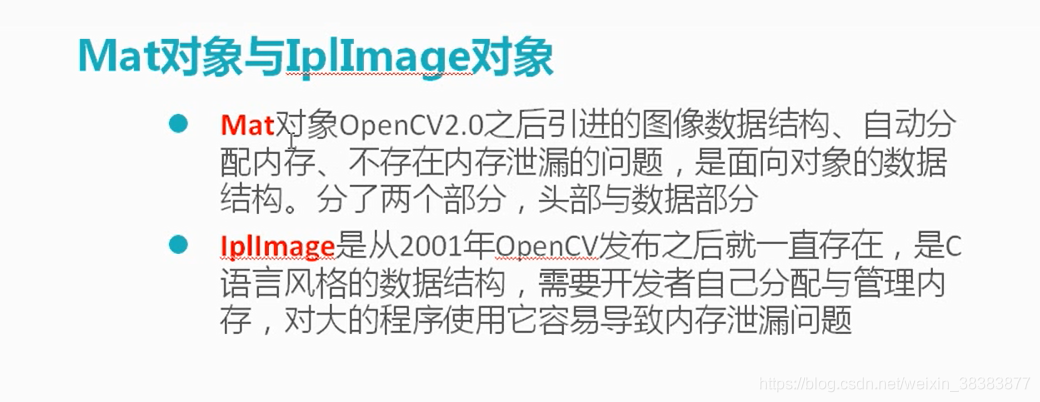






我的实践:
#include<opencv2\opencv.hpp>
#include<iostream>
#include<math.h>
using namespace cv;
using namespace std;
int main()
{//加载图像Mat src= imread("E:\\vs2015\\opencvstudy\\2.jpg", 1);if (!src.data){cout << "could not load image!" << endl;return -1;}//imshow("inputImage", src);//初始化方法1//Mat dst;//dst = Mat(src.size(), src.type()); //初始化一个Mat对象//dst = Scalar(127, 0, 255);//imshow("outputImage", dst);//初始化方法2/*Mat dst = src.clone();imshow("clone_outputImage", dst);*///初始化方法3/*Mat dst;src.copyTo(dst);imshow("copyTo_outputImage", dst);*///获取图像信息//Mat dst;//cvtColor(src, dst, CV_BGR2GRAY);//printf("input image channel:%d\n",src.channels());//printf("output image channel:%d", dst.channels());//int cols = dst.cols;//int rows = dst.rows;//cout << "cols:" <<cols<< endl;//cout << "rows:" << rows << endl;//const uchar* firstRow=dst.ptr<uchar>(0); //定义为指针,获取第一行的第一的像素的值//printf("firstRow pixel:%d", *firstRow); //初始化方法4/*Mat M(3, 3, CV_8UC3, Scalar(0, 0, 255));cout << "M:" <<endl<< M << endl;*///Mat M(100, 100, CV_8UC3, Scalar(0, 0, 255)); //Scalar和前面的CV_8UC3的3相对应//imshow("Mat_初始化", M);//Mat M2(100, 100, CV_8UC1, Scalar(127));//imshow("Mat2_初始化", M2);//初始化方法5/*Mat M3;M3.create(src.size(), src.type());M3 = Scalar(0, 0, 255);imshow("Mat3_初始化", M3);*///定义小数组Mat M4,dst;M4 =( Mat_<char>(3, 3) << 0, -1, 0, -1, 5, -1, 0, -1, 0);filter2D(src, dst, -1, M4); //depth可以默认为-1,不影响imshow("dst", dst);Mat M5 = Mat::zeros(src.size(), src.type());Mat M6 = Mat::zeros(2,2, src.type());Mat M7 = Mat::eye(2, 2, src.type());cout << M6 << endl;cout << M7 << endl;waitKey(0);return 0;
}

















)
)
